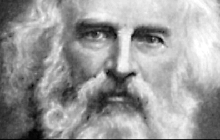Others believe that beauty is external to us, that it is created, and that we can all find beauty if we look for it, especially in nature. A great summation of this view can be found in the following letter that Pope John Paul II wrote to artists.
LETTER OF HIS HOLINESS POPE JOHN PAUL II
TO ARTISTS (1999)
To all who are passionately dedicated
to the search for new “epiphanies” of beauty
so that through their creative work as artists
they may offer these as gifts to the world.
“God saw all that he had made, and it was very good” (Gn 1:31)
The artist, image of God the Creator
1. None can sense more deeply than you artists, ingenious creators of beauty that you are, something of the pathos with which God at the dawn of creation looked upon the work of his hands. A glimmer of that feeling has shone so often in your eyes when—like the artists of every age—captivated by the hidden power of sounds and words, colours and shapes, you have admired the work of your inspiration, sensing in it some echo of the mystery of creation with which God, the sole creator of all things, has wished in some way to associate you.
That is why it seems to me that there are no better words than the text of Genesis with which to begin my Letter to you, to whom I feel closely linked by experiences reaching far back in time and which have indelibly marked my life. In writing this Letter, I intend to follow the path of the fruitful dialogue between the Church and artists which has gone on unbroken through two thousand years of history, and which still, at the threshold of the Third Millennium, offers rich promise for the future.
In fact, this dialogue is not dictated merely by historical accident or practical need, but is rooted in the very essence of both religious experience and artistic creativity. The opening page of the Bible presents God as a kind of exemplar of everyone who produces a work: the human craftsman mirrors the image of God as Creator. This relationship is particularly clear in the Polish language because of the lexical link between the words stwórca (creator) and twórca (craftsman).
What is the difference between “creator” and “craftsman”? The one who creates bestows being itself, he brings something out of nothing—ex nihilo sui et subiecti, as the Latin puts it—and this, in the strict sense, is a mode of operation which belongs to the Almighty alone. The craftsman, by contrast, uses something that already exists, to which he gives form and meaning. This is the mode of operation peculiar to man as made in the image of God. In fact, after saying that God created man and woman “in his image” (cf. Gn 1:27), the Bible adds that he entrusted to them the task of dominating the earth (cf. Gn 1:28). This was the last day of creation (cf. Gn 1:28-31). On the previous days, marking as it were the rhythm of the birth of the cosmos, Yahweh had created the universe. Finally he created the human being, the noblest fruit of his design, to whom he subjected the visible world as a vast field in which human inventiveness might assert itself.
God therefore called man into existence, committing to him the craftsman’s task. Through his “artistic creativity” man appears more than ever “in the image of God”, and he accomplishes this task above all in shaping the wondrous “material” of his own humanity and then exercising creative dominion over the universe which surrounds him. With loving regard, the divine Artist passes on to the human artist a spark of his own surpassing wisdom, calling him to share in his creative power. Obviously, this is a sharing which leaves intact the infinite distance between the Creator and the creature, as Cardinal Nicholas of Cusa made clear: “Creative art, which it is the soul’s good fortune to entertain, is not to be identified with that essential art which is God himself, but is only a communication of it and a share in it”.(1)
That is why artists, the more conscious they are of their “gift”, are led all the more to see themselves and the whole of creation with eyes able to contemplate and give thanks, and to raise to God a hymn of praise. This is the only way for them to come to a full understanding of themselves, their vocation and their mission.
The special vocation of the artist
2. Not all are called to be artists in the specific sense of the term. Yet, as Genesis has it, all men and women are entrusted with the task of crafting their own life: in a certain sense, they are to make of it a work of art, a masterpiece.
It is important to recognize the distinction, but also the connection, between these two aspects of human activity. The distinction is clear. It is one thing for human beings to be the authors of their own acts, with responsibility for their moral value; it is another to be an artist, able, that is, to respond to the demands of art and faithfully to accept art’s specific dictates.(2) This is what makes the artist capable of producing objects, but it says nothing as yet of his moral character. We are speaking not of moulding oneself, of forming one’s own personality, but simply of actualizing one’s productive capacities, giving aesthetic form to ideas conceived in the mind.
The distinction between the moral and artistic aspects is fundamental, but no less important is the connection between them. Each conditions the other in a profound way. In producing a work, artists express themselves to the point where their work becomes a unique disclosure of their own being, of what they are and of how they are what they are. And there are endless examples of this in human history. In shaping a masterpiece, the artist not only summons his work into being, but also in some way reveals his own personality by means of it. For him art offers both a new dimension and an exceptional mode of expression for his spiritual growth. Through his works, the artist speaks to others and communicates with them. The history of art, therefore, is not only a story of works produced but also a story of men and women. Works of art speak of their authors; they enable us to know their inner life, and they reveal the original contribution which artists offer to the history of culture.
The artistic vocation in the service of beauty
3. A noted Polish poet, Cyprian Norwid, wrote that “beauty is to enthuse us for work, and work is to raise us up”.(3)
The theme of beauty is decisive for a discourse on art. It was already present when I stressed God’s delighted gaze upon creation. In perceiving that all he had created was good, God saw that it was beautiful as well.(4) The link between good and beautiful stirs fruitful reflection. In a certain sense, beauty is the visible form of the good, just as the good is the metaphysical condition of beauty. This was well understood by the Greeks who, by fusing the two concepts, coined a term which embraces both: kalokagathía, or beauty-goodness. On this point Plato writes: “The power of the Good has taken refuge in the nature of the Beautiful”.(5)
It is in living and acting that man establishes his relationship with being, with the truth and with the good. The artist has a special relationship to beauty. In a very true sense it can be said that beauty is the vocation bestowed on him by the Creator in the gift of “artistic talent”. And, certainly, this too is a talent which ought to be made to bear fruit, in keeping with the sense of the Gospel parable of the talents (cf. Mt 25:14-30).
Here we touch on an essential point. Those who perceive in themselves this kind of divine spark which is the artistic vocation—as poet, writer, sculptor, architect, musician, actor and so on—feel at the same time the obligation not to waste this talent but to develop it, in order to put it at the service of their neighbour and of humanity as a whole.
The artist and the common good
4. Society needs artists, just as it needs scientists, technicians, workers, professional people, witnesses of the faith, teachers, fathers and mothers, who ensure the growth of the person and the development of the community by means of that supreme art form which is “the art of education”. Within the vast cultural panorama of each nation, artists have their unique place. Obedient to their inspiration in creating works both worthwhile and beautiful, they not only enrich the cultural heritage of each nation and of all humanity, but they also render an exceptional social service in favour of the common good.
The particular vocation of individual artists decides the arena in which they serve and points as well to the tasks they must assume, the hard work they must endure and the responsibility they must accept. Artists who are conscious of all this know too that they must labour without allowing themselves to be driven by the search for empty glory or the craving for cheap popularity, and still less by the calculation of some possible profit for themselves. There is therefore an ethic, even a “spirituality” of artistic service, which contributes in its way to the life and renewal of a people. It is precisely this to which Cyprian Norwid seems to allude in declaring that “beauty is to enthuse us for work, and work is to raise us up”.
Art and the mystery of the Word made flesh
5. The Law of the Old Testament explicitly forbids representation of the invisible and ineffable God by means of “graven or molten image” (Dt 27:15), because God transcends every material representation: “I am who I am” (Ex 3:14). Yet in the mystery of the Incarnation, the Son of God becomes visible in person: “When the fullness of time had come, God sent forth his Son born of woman” (Gal 4:4). God became man in Jesus Christ, who thus becomes “the central point of reference for an understanding of the enigma of human existence, the created world and God himself”.(6)
This prime epiphany of “God who is Mystery” is both an encouragement and a challenge to Christians, also at the level of artistic creativity. From it has come a flowering of beauty which has drawn its sap precisely from the mystery of the Incarnation. In becoming man, the Son of God has introduced into human history all the evangelical wealth of the true and the good, and with this he has also unveiled a new dimension of beauty, of which the Gospel message is filled to the brim.
Sacred Scripture has thus become a sort of “immense vocabulary” (Paul Claudel) and “iconographic atlas” (Marc Chagall), from which both Christian culture and art have drawn. The Old Testament, read in the light of the New, has provided endless streams of inspiration. From the stories of the Creation and sin, the Flood, the cycle of the Patriarchs, the events of the Exodus to so many other episodes and characters in the history of salvation, the biblical text has fired the imagination of painters, poets, musicians, playwrights and film-makers. A figure like Job, to take but one example, with his searing and ever relevant question of suffering, still arouses an interest which is not just philosophical but literary and artistic as well. And what should we say of the New Testament? From the Nativity to Golgotha, from the Transfiguration to the Resurrection, from the miracles to the teachings of Christ, and on to the events recounted in the Acts of the Apostles or foreseen by the Apocalypse in an eschatological key, on countless occasions the biblical word has become image, music and poetry, evoking the mystery of “the Word made flesh” in the language of art.
In the history of human culture, all of this is a rich chapter of faith and beauty. Believers above all have gained from it in their experience of prayer and Christian living. Indeed for many of them, in times when few could read or write, representations of the Bible were a concrete mode of catechesis.(7) But for everyone, believers or not, the works of art inspired by Scripture remain a reflection of the unfathomable mystery which engulfs and inhabits the world.
A fruitful alliance between the Gospel and art
6. Every genuine artistic intuition goes beyond what the senses perceive and, reaching beneath reality’s surface, strives to interpret its hidden mystery. The intuition itself springs from the depths of the human soul, where the desire to give meaning to one’s own life is joined by the fleeting vision of beauty and of the mysterious unity of things. All artists experience the unbridgeable gap which lies between the work of their hands, however successful it may be, and the dazzling perfection of the beauty glimpsed in the ardour of the creative moment: what they manage to express in their painting, their sculpting, their creating is no more than a glimmer of the splendour which flared for a moment before the eyes of their spirit.
Believers find nothing strange in this: they know that they have had a momentary glimpse of the abyss of light which has its original wellspring in God. Is it in any way surprising that this leaves the spirit overwhelmed as it were, so that it can only stammer in reply? True artists above all are ready to acknowledge their limits and to make their own the words of the Apostle Paul, according to whom “God does not dwell in shrines made by human hands” so that “we ought not to think that the Deity is like gold or silver or stone, a representation by human art and imagination” (Acts 17:24, 29). If the intimate reality of things is always “beyond” the powers of human perception, how much more so is God in the depths of his unfathomable mystery!
The knowledge conferred by faith is of a different kind: it presupposes a personal encounter with God in Jesus Christ. Yet this knowledge too can be enriched by artistic intuition. An eloquent example of aesthetic contemplation sublimated in faith are, for example, the works of Fra Angelico. No less notable in this regard is the ecstatic lauda, which Saint Francis of Assisi twice repeats in the chartula which he composed after receiving the stigmata of Christ on the mountain of La Verna: “You are beauty… You are beauty!”.(8) Saint Bonaventure comments: “In things of beauty, he contemplated the One who is supremely beautiful, and, led by the footprints he found in creatures, he followed the Beloved everywhere”.(9)
A corresponding approach is found in Eastern spirituality where Christ is described as “the supremely Beautiful, possessed of a beauty above all the children of earth”.(10) Macarius the Great speaks of the transfiguring and liberating beauty of the Risen Lord in these terms: “The soul which has been fully illumined by the unspeakable beauty of the glory shining on the countenance of Christ overflows with the Holy Spirit… it is all eye, all light, all countenance”.(11)
Every genuine art form in its own way is a path to the inmost reality of man and of the world. It is therefore a wholly valid approach to the realm of faith, which gives human experience its ultimate meaning. That is why the Gospel fullness of truth was bound from the beginning to stir the interest of artists, who by their very nature are alert to every “epiphany” of the inner beauty of things.










